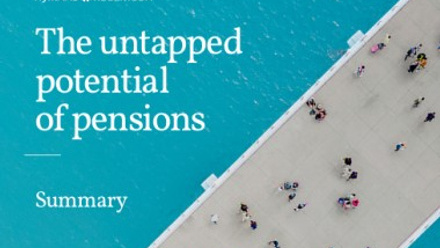The key considerations for the four stages of flexible retirement

1. Age 55+ and pension freedoms
Most workplace money purchase and group personal pension (GPP) providers allow members to take advantage of pension freedoms including uncrystallised funds pension lump sum (UFPLS) and flexi-access drawdown (FAD).
UFPLS and MPAA
Taking a UFPLS triggers the £4,000 money purchase annual allowance (MPAA) from the next day. Once the MPAA applies, members can’t use carry forward for money purchase contributions.
If a member exceeds the MPAA and an annual allowance charge applies, they’re likely to have to fund the cost themselves. Mandatory scheme pays only applies if the annual allowance charge is over £2,000 and the total pension savings to the scheme in question exceed £40,000 for the tax year.
This isn’t currently a problem for qualifying earnings schemes. Qualifying or band earnings fall between £6,036 and £50,000 for 2019/20. So the overall 8 per cent employer plus employee contributions are a maximum of £43,865 x 8% = £3,509.12 in 2019/20.
However, higher earners in schemes certified on a set 1, 2 or 3 basis could be caught out, as in this case, contributions are calculated from the first £1 of uncapped pensionable earnings.
Approximate cross-over points:
Certification basis |
Overall contribution requirement |
Pensionable earnings |
Overall contribution |
| Set 1 | 9 per cent pensionable earnings | £44,460 | £4,001 |
| Set 2 | 8 per cent pensionable earnings | £50,015 | £4,001 |
| Set 3 | 7 per cent pensionable earnings | £57,160 | £4,001 |
Employers with qualifying schemes certified on a set 1, 2 or 3 basis could consider creating separate sections for employees who notify that they’ve triggered the MPAA. Allowing these employees to move to a qualifying earnings basis is compatible with employers’ automatic enrolment duties.
Flexi-access drawdown
Employees who use FAD to access their tax-free cash without taking any drawdown income don’t trigger the MPAA. They do trigger the MPAA the day after they start taking any drawdown income. They could also trigger the MPAA via taking other pension benefits.
Employees may want to take all their available tax-free cash. If so, some providers arrange for the member to crystallise everything except for a nominal amount which is used to keep their pension accumulation arrangement open. This enables their employer to continue to pay across its own plus the employee contributions with no breaks.
2. Protected early retirement ages
While 55 is the current normal minimum pension age, some workers have pre-A day protected early retirement ages. For full details, see HMRCs pension tax manual.
Even if an employee’s current workplace pension provision started after 5 April 2006, it might benefit from a protected early retirement age following a block transfer.
If a member wants to take up this form of early retirement, they have to crystallise all their benefits from all arrangements in the protected scheme at the same time. So it’s not possible to use administrative workarounds such as leaving £2 in an accumulation arrangement to make it easy to support ongoing contributions. If the employee wants to continue active membership of a scheme, they have to set up a new arrangement after they’ve crystallised all their existing benefits in that scheme.
Similar considerations apply to members with scheme-level protected tax-free cash. They need to take all the benefits in the scheme benefitting from this protection at the same time.
3. State pension age and AE
Only workers aged between 22 and state pension age (SPA) and earning over the automatic enrolment earnings trigger can be eligible jobholders. Employers can get confused about the significance of an employee changing status to non-eligible jobholder on reaching SPA.
Earnings |
Age 16-21 |
Age 22-SPA |
SPA-age 74 |
| Up to lower earning threshold | Entitled workers | Entitled workers | Entitled workers |
| Over lower earnings threshold and up to earnings trigger for AE | Non-eligible jobholders | Non-eligible jobholders | Non-eligible jobholders |
| Over AE earnings trigger | Non-eligible jobholders | Eligible jobholders | Non-eligible jobholders |
Perhaps this is because reaching age 22 triggers an automatic enrolment assessment. This ensures that an employee who isn’t a member of a qualifying scheme but is earning over the earnings trigger is automatically enrolled when they change status on their 22nd birthday.
In contrast, reaching SPA and moving from eligible jobholder to non-eligible jobholder status doesn’t trigger a new assessment. If an employee is already in a qualifying scheme when they reach SPA, they remain an active member unless they make their own decision to stop contributions.
An employee earning over the automatic enrolment earnings trigger when they reach SPA, remains a jobholder. If a jobholder’s active membership of a qualifying scheme ceases at SPA and it isn’t at the employee’s request, the employer has an immediate automatic enrolment duty – so the employee should be reinstated into the scheme if a mistake is made.
The switch from eligible to non-eligible jobholder does have some effects. Unless an employer offers contractual enrolment, new starters over SPA can only be non-eligible jobholders with opt-in rights or entitled workers with joining rights. In addition, employees over SPA who’ve opted out or ceased active membership of a qualifying scheme are out of scope for their employer’s three yearly cyclical re-enrolment exercises.
4. Age 75 and tax relief on member contributions
Once someone reaches age 75, they’re no longer eligible for tax relief on member contributions. Most GPP providers can only accept member contributions on a relief at source basis – where the contribution is paid net of basic rate tax relief. If a provider has no mechanism to accept gross member contributions, it can’t accept any member contributions for those aged over 74.
The standard tax relief test continues to apply to employer contributions. The employer can claim relief on contributions made on behalf of an employee so long as the expenditure is wholly and exclusively for a business purpose.
The author is Bernadette Lewis, financial planning manager at Scottish Widows.
This article is provided by Scottish Widows.
Supplied by REBA Associate Member, Scottish Widows
Scottish Widows is a life, pensions and investment company.







